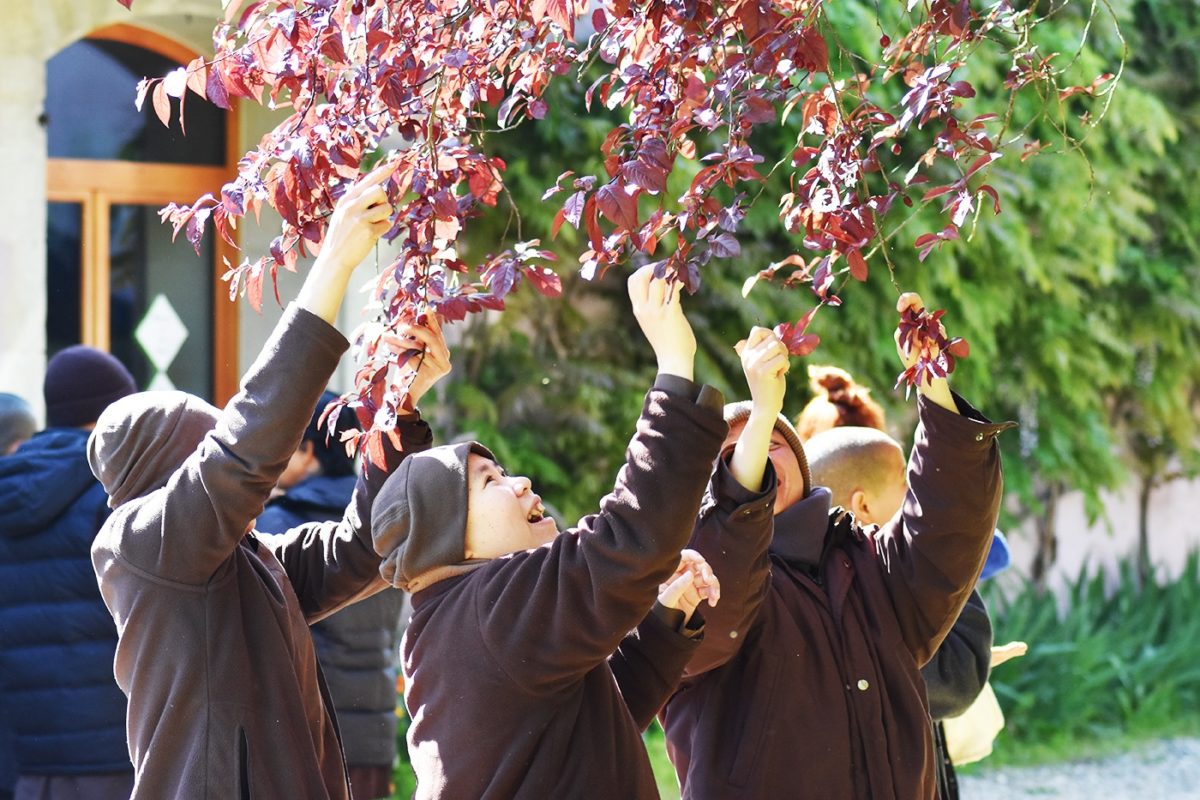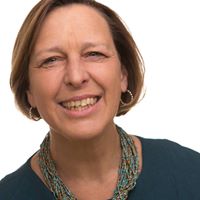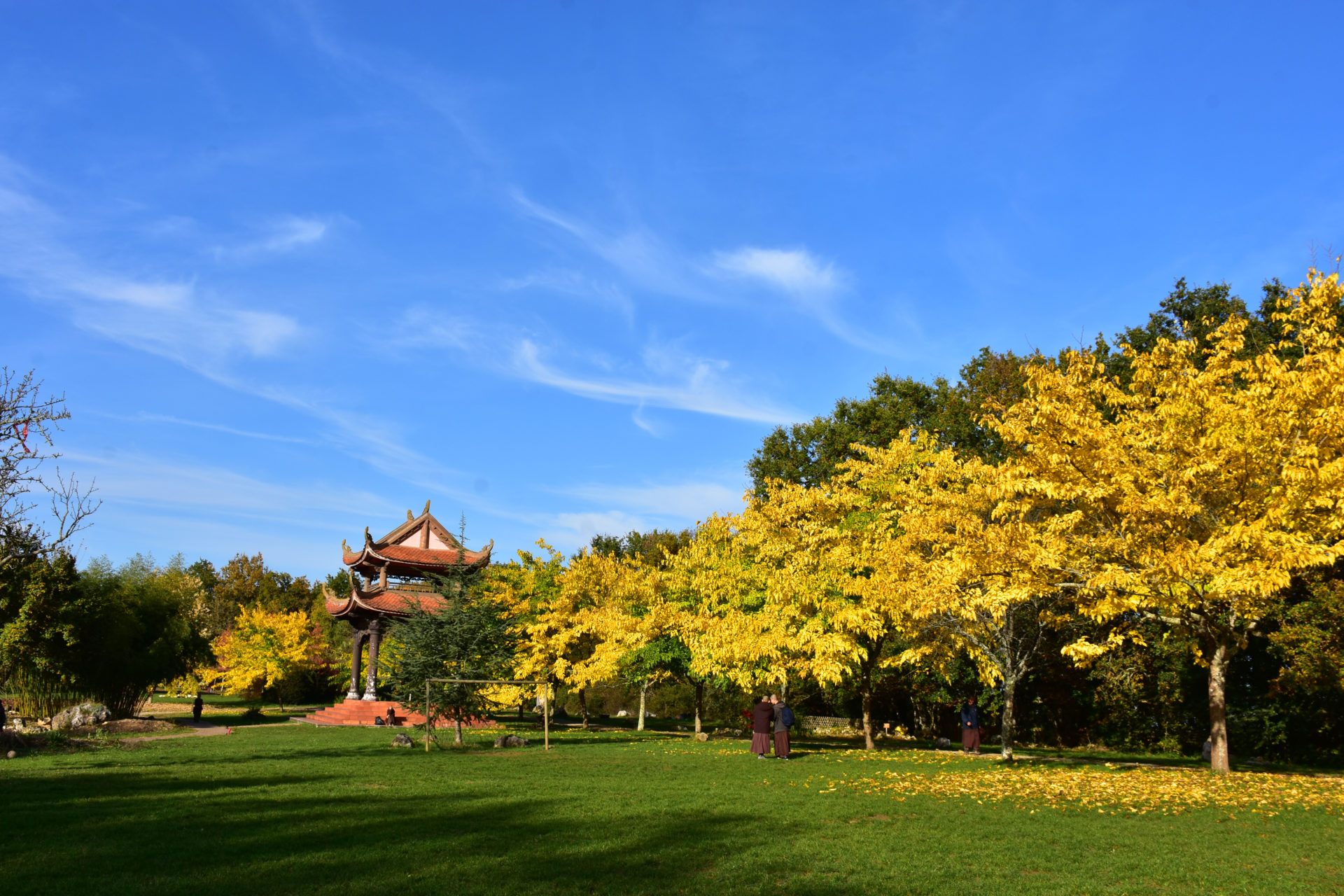My Companion Along the Path
By Jindra Cekan

I come from a charming, multilingual, and disruptively dysfunctional family. There was much to be afraid of. What would happen to my mother if she hurt herself while falling down drunk? What if my father’s plane crashed while traveling in the jungles of Borneo,
My Companion Along the Path
By Jindra Cekan

I come from a charming, multilingual, and disruptively dysfunctional family. There was much to be afraid of. What would happen to my mother if she hurt herself while falling down drunk? What if my father’s plane crashed while traveling in the jungles of Borneo, Indonesia? What if he went bankrupt again, and I couldn’t continue to attend private school? What if I failed an exam or a class? What if the boy I liked didn’t invite me to the dance? What if my mother succeeded in killing herself?
I tried to control my fears. When I was little, I covered my stuffed animals and dolls to keep them safe. I prayed; then I read about different faiths and looked for a way to calm my emotions. Later in life, I tried not to hyperventilate about things I could be afraid of: What would my employer do if I didn’t hand in the proposal on time? What would my friends say about me if they knew how ___ I was? What was my boyfriend doing, and would it mean he didn’t like me?
I tried to feel safe and prepared by planning and predicting what others would say and do, and planning ways in which I could respond. What if, what if, what if? Then, then, then, then. I had contingency plans for everything, from physical harm to penury, from failing out of school to becoming pregnant or being infertile. I had to be prepared. I had to work very hard so nothing bad would happen.
Doing my graduate work in the UK and Mali, my research, planning, and analysis became obsessive. Fueled by fear of failing, I found a Zen meditation group that helped me. I worked on Wall Street—far more stressful than my work in Africa—and finished graduate school. When, in 1995, I discovered the practice taught by Thich Nhat Hanh, I found my spiritual home. Listening to him and the monastics, reading books like The Miracle of Mindfulness, Anger, True Love, and practicing on retreat and at weekly Sangha meetings with the Washington Community of Mindfulness taught me to watch my mind and forgive it.
I would watch the chaos of my thoughts and my inability to sit. Returning to my breath for the thousandth time as I reached only five of ten breaths, I judged myself, afraid I wasn’t good enough to do this. With the help of my Sangha’s Dharma sharing, I learned to watch the present moment with more compassion. I sat; I walked; I judged; I watched boredom, frustration, and fear; and then I forgave myself. Then I dozed, then itched, then planned, and over time I felt peace more often.
I walked in faraway countries, such as Kosovo’s war zones, Mali’s Timbuktu desert, and the Czech Republic’s bustling cities, and in healing, holy spaces, such as Blue Cliff Monastery’s lotus pond, Plum Village’s sunflower paths, Washington Mindfulness Community’s Vihara halls, and Prague Lotus Centrum’s rooms. I came to see that it was never the place but the practitioner; the same fears traveled with me. My mind could be calm in Kosovo while agitated at Blue Cliff Monastery; I could be compassionate at a border crossing, but I was angrily impatient with fellow retreatants.
When I began practicing the Fourteen Mindfulness Trainings as an Order of Interbeing aspirant, I saw that the way to understand my agitation was contained in the Sixth Mindfulness Training on Anger. The training teaches us to “practice Right Diligence to nourish our capacity of understanding, love, joy, and inclusiveness, gradually transforming our anger, violence, and fear and helping others do the same.” My dear Dharma teacher Richard Brady taught me to walk the path of right diligence through examining the causes and conditions of things as a way to equanimity and compassion. Looking deeply at my parents, I saw so many ways they too were afraid, passing that fear on to me. To understand them was possible, but could I love, have joy and inclusively welcome them and forgive them, myself, and others? Not yet. Sometimes I see myself passing on the seeds of fear to my children and brothers. So I continue to sit and walk.
How have I sat with my fear and judgment? The Sixth Mindfulness Training gave me signposts for how to get beyond the fear through being aware of the conditions that either feed anger, violence, and fear or that feed understanding love, joy, and inclusiveness. When negative emotions arise, I try to turn to the positive ones, retraining the neurology of my mind and choosing peace over planning. Here are some practices that have helped me work with fear:
When I look with the awareness of interbeing at people I am afraid of or who are scared of me, I try to understand them. I can see that the violence I am afraid of is fear of someone who is different and will do things I cannot predict. I counter this through considering ways in which I can see this person as more alike than different from me. For example, when I can see how this person and I are both trying to be happy, how we both work, how we are both children and may have children of our own, I can breathe easier.
When I am caught in fears of the past repeating itself or a bleak future that may not happen, I am prevented from living now. I find that by going back to my breath, sensing the floor beneath my feet, and realizing all that exists right now, I feel hopeful that the next moment may be good. I can rest in the calmness of now when I see that the next moment is uniquely different and cannot ever be a carbon copy of a feared past. Even if it is similar, I now have tools from the practice to be safe.
When I practice metta by sending happiness and peace to family, friends, acquaintances, those experiencing dangerous events, and even those to whom I have negative reactions, I heal even as I send healing. As I walk through different parts of the world, I remind myself that we interare. The Czech old lady’s hobbling fate is hopefully mine, and mine is hers, and I offer to carry her groceries and wish her well. I can see my mischievous sons in the Zimbabwean boys playing soccer in the dusty square, and I cheer them on. I can remember to be grateful for the water flowing on my hands from my tap, in the same way that the Ethiopian woman took her fifty-liter jerrycan of water off her head, splashing the water when we were together in her village. When I walk by drunks, I try to send them metta. We are one.
As I pick up trash while walking our dog, or use fewer chemicals in my housework so that our oceans are less polluted, I remember that the planet’s health is mine.
By looking at others and myself with compassion, here and now, and working to make their lives better, I am practicing interbeing. I release the grip of “I” to “we.” By reading the introduction, “The Fourteen Mindfulness Trainings help us cultivate concentration and insight which free us from fear and the illusion of a separate self,“ I realized the insight that comes from the practice is the most precious gift Thay and all of you have given to me. The mindfulness practice, like a small, steady stream, has eased the grip of fear in my daily life and watered seeds of joy and interbeing. I slide backward sometimes, but fear is far less present. I accept the present moment more often precisely as it is and not as it should, could, or might be if only I were in control.
May we all experience freedom from fear. May all beings be well. Namaste.

Jindra Cekan, True Collective Maintenance, has worked in international development for thirty years. She has been blessed with Thay's practice for twenty-four years since joining the Washington Mindfulness Community in Washington, D.C., US. She practices with Plum Village in Prague, the Czech Republic, and the Florida Community of Mindfulness. She is also a single mom of two teens and loves giraffes.

